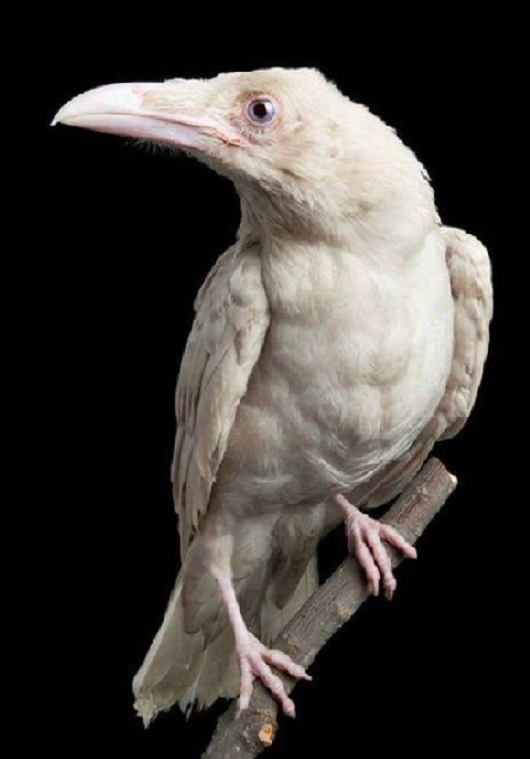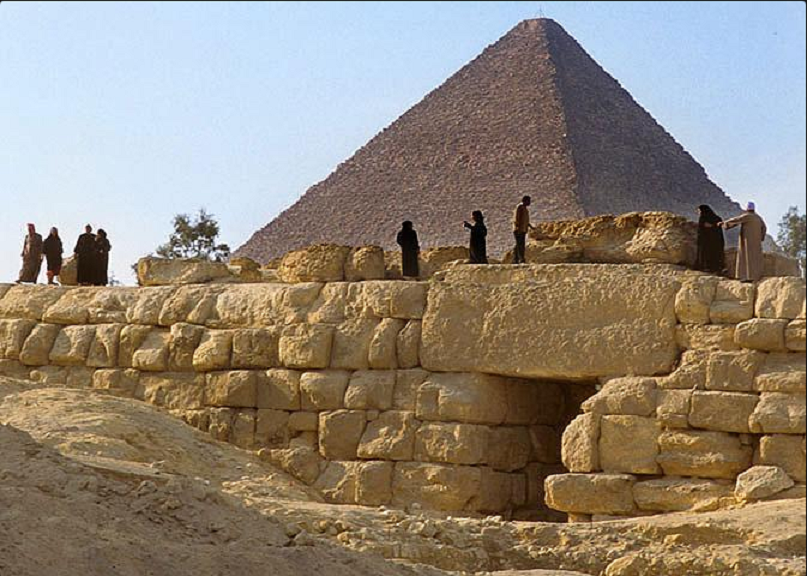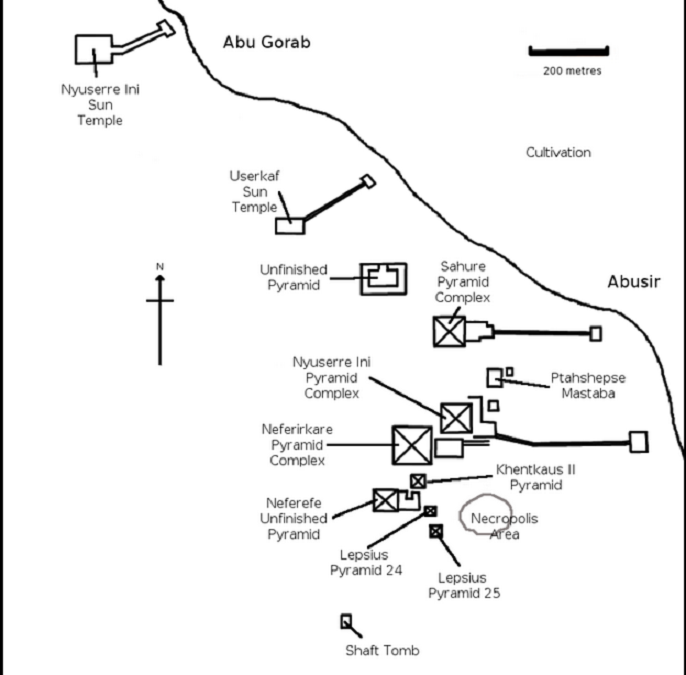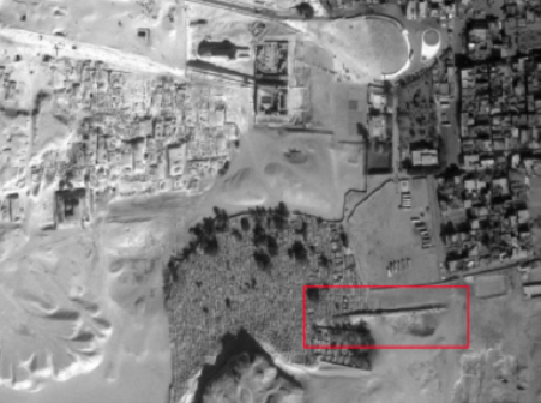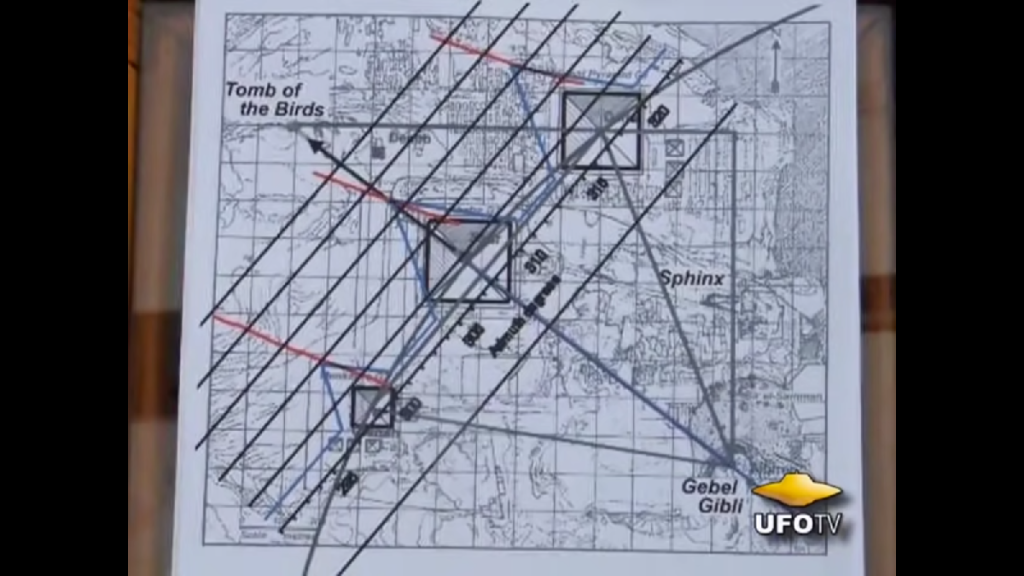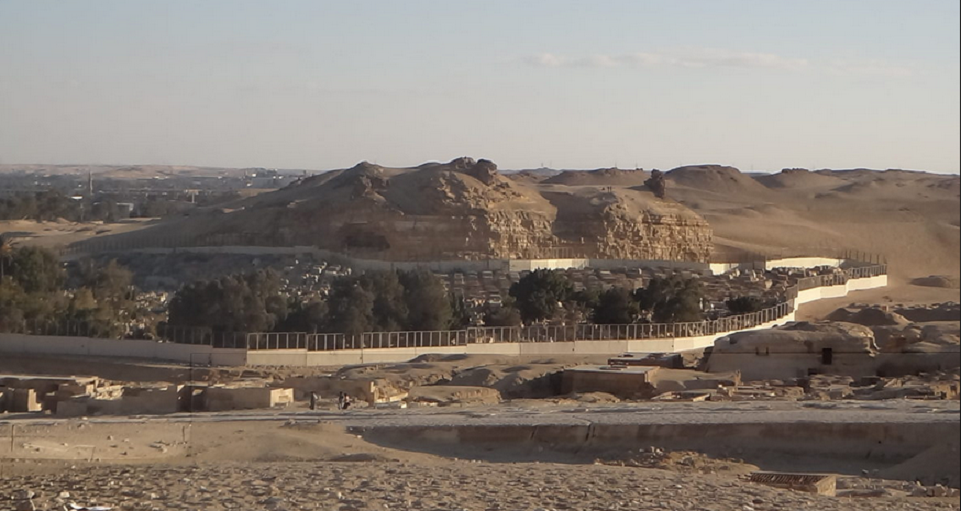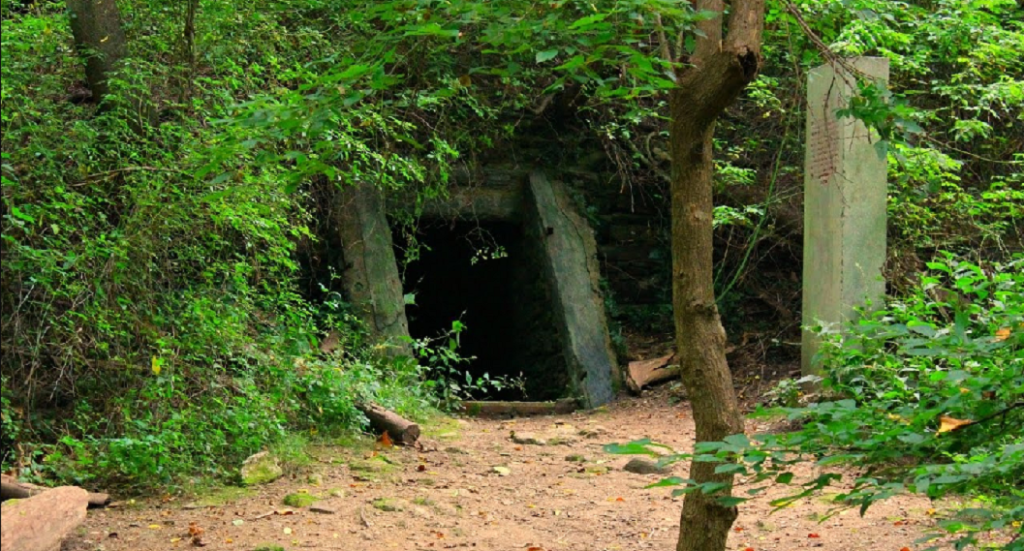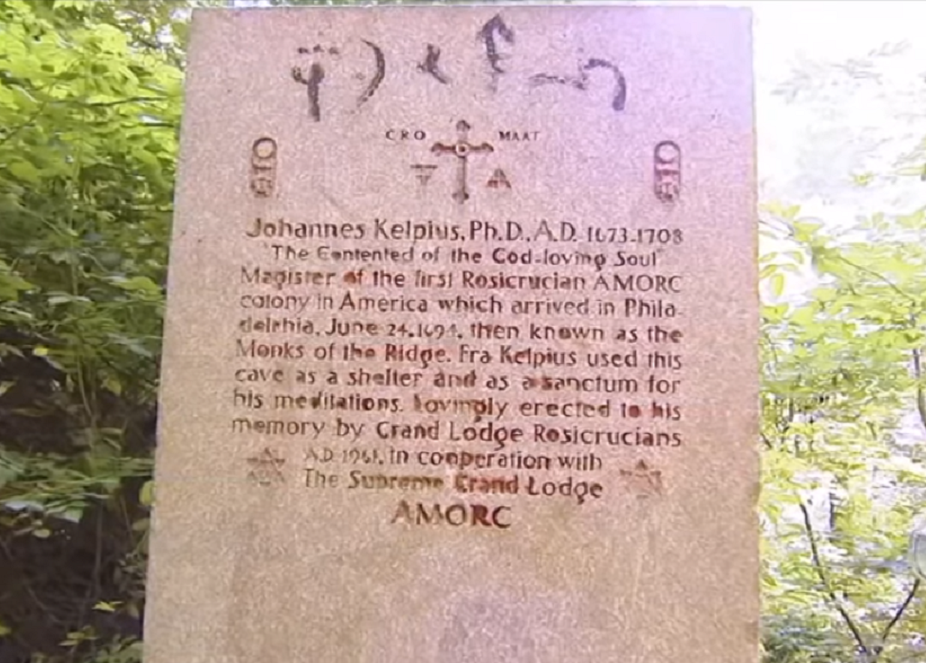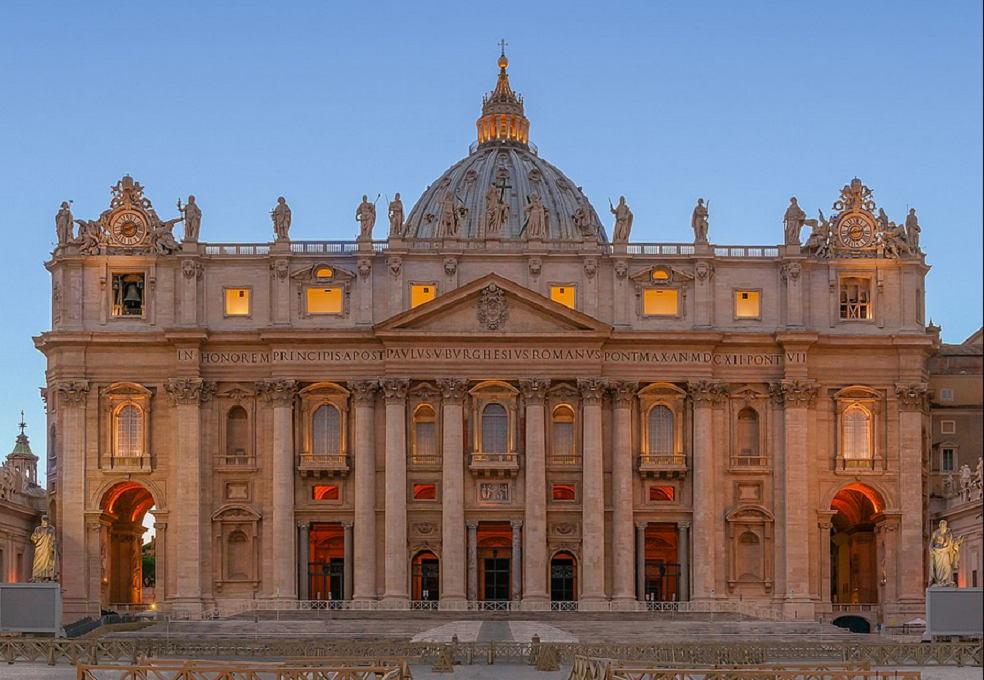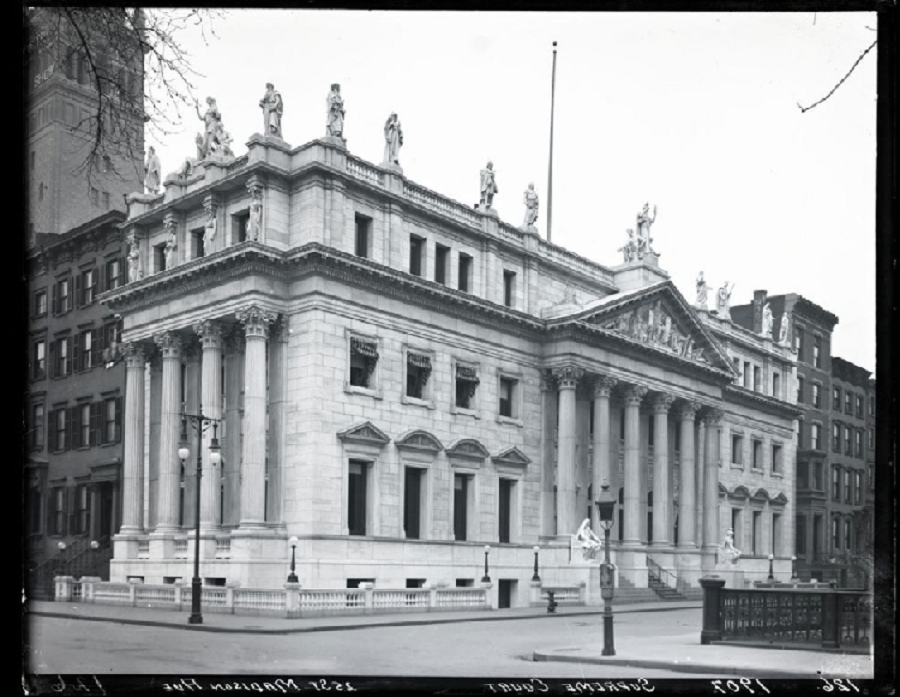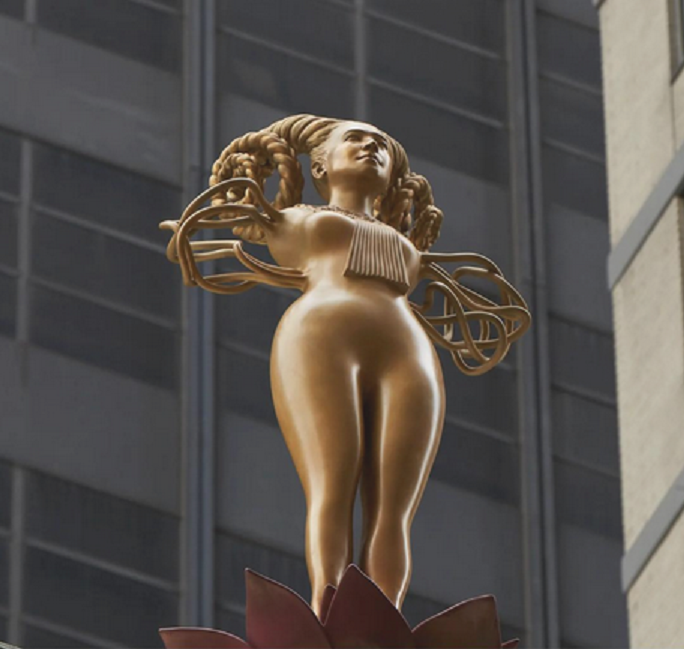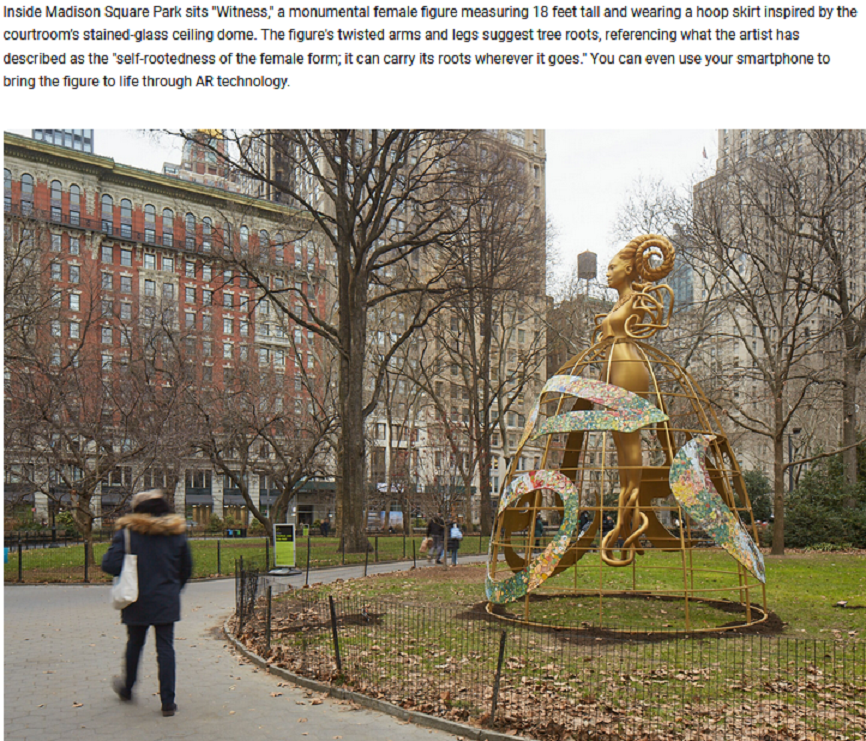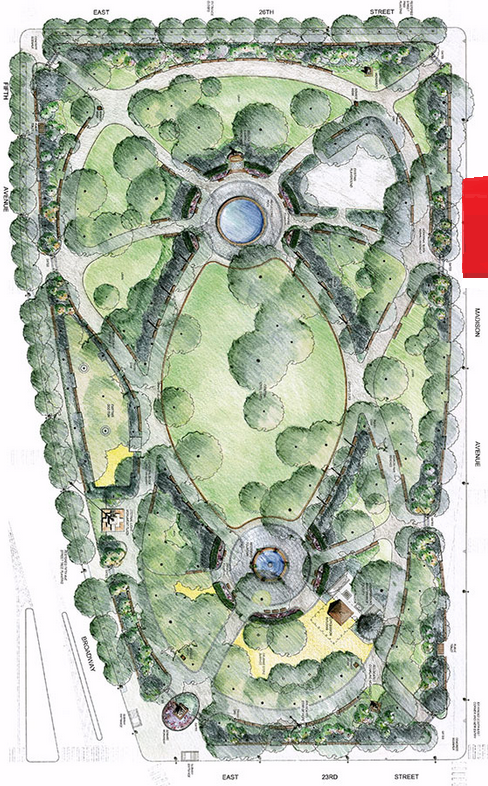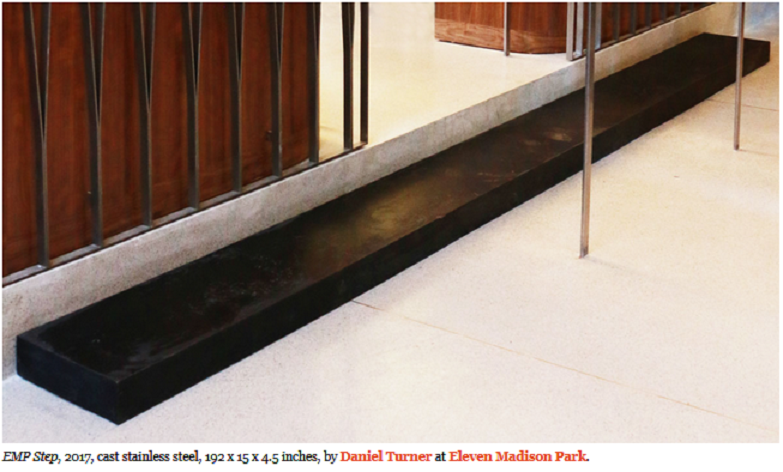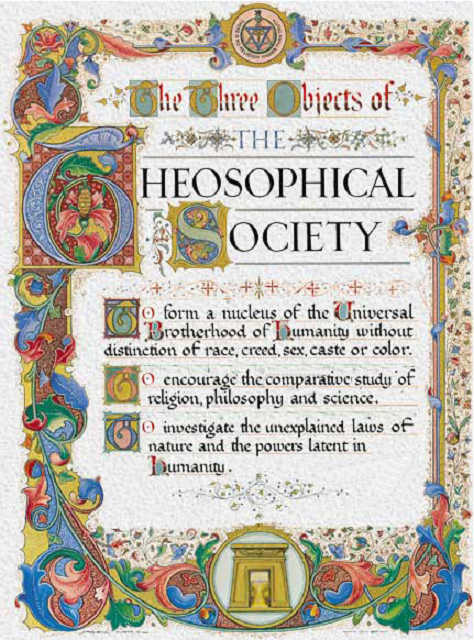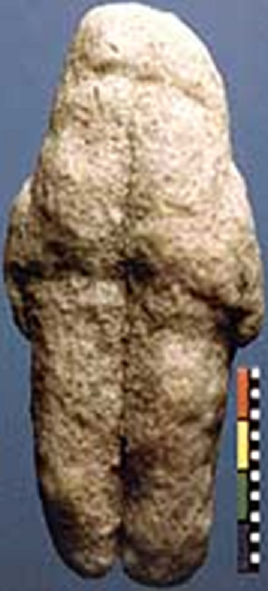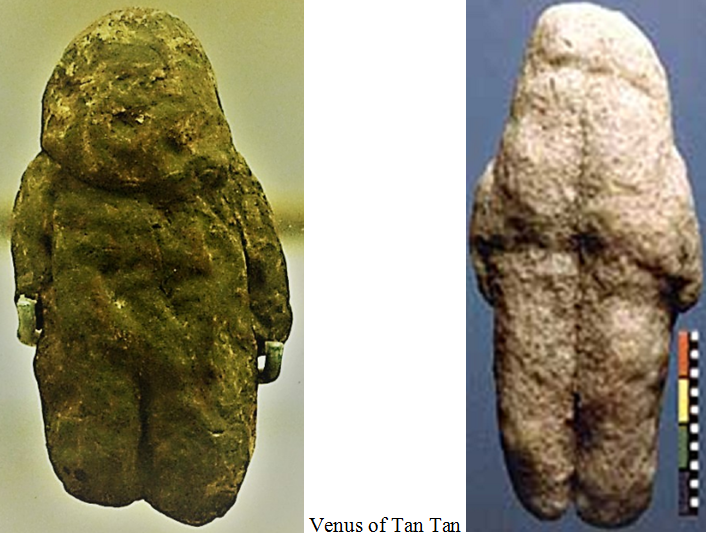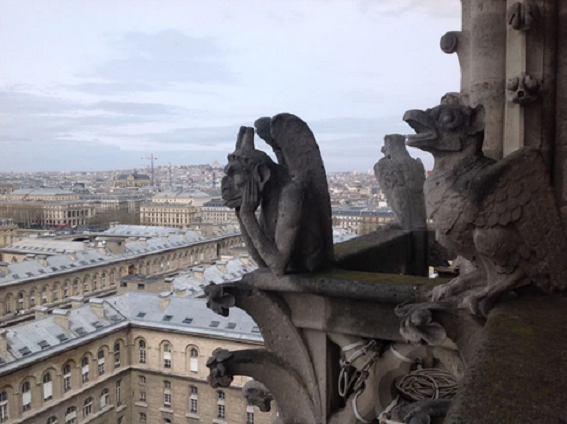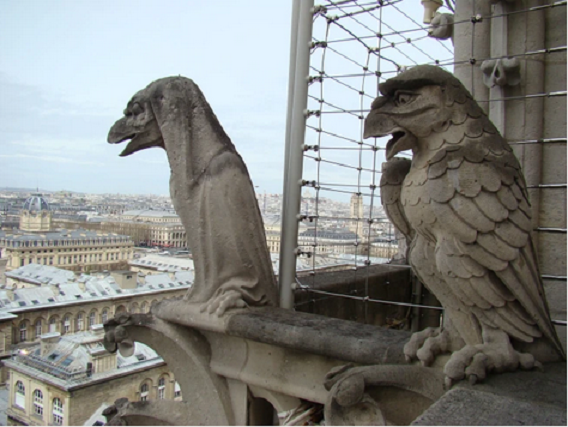“Crow Notes” augments the series Corona the Crow with some of the loose information collected for review but not otherwise incorporated—for the time being, the Notes are a rolling, ongoing accumulation of references and ideas spun off the main theme. When I started the first Corona last year, I was literally swamped in a matter of weeks after getting the idea that the ‘crow’ at the root of ‘corona’ needed an exposition.
…take a tour…
Wall of the Crow in ancient Egypt
Image source above http://wikimapia.org/36123681/Wall-of-the-Crow#/photo/5931994
“One of the oldest monumental structures on the Giza Plateau is the Wall of the Crow [marked in red]. Believed to have been the original entrance to the Giza Plateau and the dividing line between the sacred precincts of Giza and the surrounding area, the surviving section of the Wall of the Crow is over 600 feet long and over 30 feet high. The megalithic passageway is one of the largest in the ancient world and the megalithic stone over the passageway is one of the largest stones at Giza… Although all of the pyramids and temples on the Giza Plateau are very precisely aligned with the cardinal directions, the Wall of the Crow is aligned five degrees north of due east and five degrees south of due west, in alignment with the line of ancient sites as it crosses over the Giza Plateau… the [line of ancient] sites are Easter Island, Nazca, Ollantaytambo, Tassili n’Ajjer, Siwa, Giza, Petra, Ur, Perseopolis, Mohenjo Daro, Khajuraho, Pyay, Sukothai and Angkor…
… just before dawn on the spring equinox in 11,500 B.C.
At this moment, when the angle of the three stars of Orion’s belt above the horizon matched the angle of the three pyramids at Giza, the angle of the line from Regulus to Orion’s belt is five degrees above the horizon, matching the angle of the Wall of the Crow and the azimuth of the prehistoric alignment of world wonders as it crosses over Giza.” https://www.bibliotecapleyades.net/arqueologia/worldwonders/wall.htm
View a ‘Great Circle of Earth’ from a theoretical satellite orbit presented by Roger G. Gilbertson, based on the work of Jim Alison: https://www.youtube.com/watch?v=_HytJn6uaRk
The Prehistoric Alignment of World Wonders by Jim Alison https://docs18.chomikuj.pl/7212047153,PL,0,0,The-Prehistoric-Alignment-of-World-Wonders-(Jim-Alison).pdf
Joe Rogan interviews geologist Robert Schoch (pronounced shock) about the approximate age of the Sphinx at 11,500 years (20min) https://www.youtube.com/watch?v=zSjnvlDWwrE&t=1166s
The 1993 TV show that featured Schoch and John Anthony West is The Mystery of the Sphinx (1.5 hr show hosted by Charleton Heston) https://www.youtube.com/watch?v=vmVuWxkUc1o
And here’s a program about Tesla featuring the complex geometry of Giza: Nikola Tesla Limitless Energy https://www.youtube.com/watch?v=Ft1waA3p2_w
Heit el-Ghurab [Wall of the Crow in Arabic] https://msu-anthropology.github.io/daea-fs16/sites/heit-el-ghurab/heit-el-ghurab.html
“rab” references the crow/raven, and in this case, the enclosures of Ra/Re
‘Crow’ sites:
“Abū Jirāb, also spelled Abu Gurab, Abu Ghurab, or Abu Gurob, ancient Egyptian site, about 1 mile (1.6 km) north of Abū Ṣīr, between Ṣaqqārah and Al-Jīzah; it is known as the location of two 5th-dynasty (c. 2465–c. 2325 bce) sun temples. The first part of the 5th dynasty is recognized as a period of unusually strong emphasis on the worship of the sun god Re…”
https://www.britannica.com/place/Abu-Jirab ; a.k.a Abu Gorab—“ The sun temple is situated near Memphis, and is closely linked with the Abusir necropolis, both geographically and functionally.” https://en.wikipedia.org/wiki/Abu_Gorab
*
“Abusir (Arabic: ابو صير Egyptian Arabic pronunciation: [æbuˈsˤiːɾ]; Egyptian pr wsjr; Coptic: ⲃⲟⲩⲥⲓⲣⲓ busiri, “the House or Temple of Osiris“; Ancient Greek: Βούσιρις) is the name given to an ancient Egyptian archaeological pyramid complex comprising the ruins of 14 pyramids dating to the Old Kingdom period, and is part of the Pyramid Fields of the Memphis and its Necropolis UNESCO World Heritage Site… The Abusir pyramid complex is located on the Western Desert plateau at the edge of the cultivated plain, with the Giza Pyramids to its north, and Saqqara to its south, and served as one of the main elite cemeteries for the ancient Egyptian capital city of Memphis…” https://en.wikipedia.org/wiki/Abusir
Back on Giza Plateau, The Tomb of the Birds is a chamber complex with an entrance to a cave system that points back toward the center of the pyramid plaza, a newer discovery made by Andrew Collins, as told in the documentary The Lost Caves of Giza https://topdocumentaryfilms.com/lost-caves-giza/; It lies underground, cut into a ridge on the northwest side of the plateau, and based on the insight of Collins’s friend Rodney Hale, confirms that the Giza complex aligns to the constellation Cygnus (“the swan”) known as the Northern Cross.
Wall of the Crow in its correct orientation is on the southeast corner projecting into the existing Muslim cemetery (SE) toward a natural rock mound called Gebel Gibli, the head of the bird (Cygnus) which the ancient Egyptians would have revered as an ibis—the god Thoth/Hermes– or alternately, the Falcon/Hawk-headed god Sokar.
Gebel Gibli (below), abutting the cemetery, looking south from the direction of the Sphinx, appears to have a large opening left of center.
“Sokar (also known as Seker, and in Greek, Sokaris or Socharis) was the Memphite god of the dead, but he was also the patron of the workers who built the necropolis, the craftsmen who made tomb artefacts, and of those who made ritual objects and substances used in mummification. The meaning of his name is unclear. It may be derived from the term “skr” (meaning “cleaning the mouth”) mentioned in the Coffin Texts and in writings relating to the “Opening of the Mouth” ceremony (one of the funerary rituals)… Sokar was known by the epithet “he of Rosetau” [Rose+Tau= Red Cross, Rosicrucian]. This refers to the area around the Giza pyramids, but also related more generally to any necropolis and to the entrance to the underworld. He is also known as the “lord of the mysterious region” (the underworld) and the “great god with his two wings opened” – referring to his origins as a hawk deity… speculat[ion posits] that Rostau was located near Gebel Gibli, close to the Great Pyramid, and that an actual Tomb of Sokar is yet to be found under the sand close to the mysterious gateway and enclosure wall known as the “Wall of the Crow”. So far, no evidence has either proved or discounted this theory.” https://ancientegyptonline.co.uk/sokar/
Sokar’s role as the god of the dead was subsumed over time by Osiris as Egypt became unified.
__________________
Watch an extraordinary 2018 presentation at the Megalithomania conference by Andrew Collins explaining the ‘The Cygnus Key’:
“Andrew Collins: The Cygnus Key – The Denisovan Legacy, Gobekli Tepe and the birth of Egypt” https://www.youtube.com/watch?v=xCs4QKa3alc&t=4515s
___________________________________________________________________________________________________________________
__________________________________________________________________________________________________
The Kelpius Cave, Philadelphia PA
Cro – Maat, “The Truth Shall Be”
Rosicrucian source: [above text, p43] https://amorc.org.uk/sites/default/files/publications/2005-03_RC_Beacon.pdf
“Johannes Kelpius was born Johann Kelp in Transylvania in 1667, near the village of Sighisoara, the birthplace of the infamous Vlad the Impaler (the inspiration for Bram Stoker’s Dracula). After the death of his father in 1684, Johann was sent by three patrons to complete his education at Bavaria’s University of Altdorf, once one of Europe’s most respected institutions… It is thought that while at the university he became acquainted with the Pietist religious movement. Pietism was initially a reaction against the formalism of orthodox Lutheranism, but spread to include a wide range of esoteric (and heretical) Christian philosophies.
One of the most charismatic figures in German Pietism was Johann Jacob Zimmerman, a brilliant mathematician, astronomer, and cleric. Zimmerman had been dismissed from his position as a Lutheran minister for preaching that the Lutheran Church was the Anti-Christ. In the years following his dismissal and subsequent exile, Zimmerman formed a small group named The Chapter of Perfection… Probably around 1692, the Chapter of Perfection received an anonymous offer of free land in Pennsylvania and free passage there. America was regarded by the young Pietists to be a land untainted by the sins of European decadence, and the ordained place to await the final drama of mankind.
In August of 1693, near the time the group was about to depart for America, Zimmerman died, leaving the young Kelpius as the group’s spiritual leader. Kelpius was determined to complete Zimmerman’s mission, and after a remarkable sea voyage, the group arrived in the infant city of Philadelphia. Eventually Kelpius led his group to a ridge above the Wissahickon gorge, one of the oldest geologic formations in North America. There along the fortieth parallel, Kelpius constructed a forty-foot square tabernacle, forty in his esoteric philosophy being a number of the highest mystical significance… They were often referred to collectively as “The Woman in the Wilderness,” likely in reference to a passage in the Biblical book of Revelation, but perhaps as a code phrase understood only by the initiated.
… Today, a small man-made cave in a remote wooded corner of Philadelphia’s Fairmount Park is considered by many to have once been the meditation cell of the young mystically-minded spiritual teacher. A stone marker beside the cave claims Kelpius as America’s first Rosicrucian master. Both the authenticity of the cave and the claim of Kelpius’s position with the Rosicrucians are not conclusive.” http://kelpius.org/biography.html
AMORC in the USA can be traced to the French ‘Martinist’ Rosicrucians who were allegedly taught their brand of esotericism by Portuguese kaballist Pasqually, https://en.wikipedia.org/wiki/Martinez_de_Pasqually
____________________________________________________________________________
“kel” and “curia” come out of the Korone crow lexicon—see Part One for crow words. More on Rosicrucians to come. https://jenniferlake.wordpress.com/2022/06/10/corona-the-crow/
______________________________________________
The Roman Curia, Saint Peter’s Basilica
“Curia in medieval and later Latin usage means “court” in the sense of “royal court” rather than “court of law”. The Roman Curia is sometimes anglicized as the Court of Rome, as in the 1534 Act of Parliament that forbade appeals to it from England.[5] It is the papal court and assists the Pope in carrying out his functions… It is normal for every Latin Roman Catholic diocese to have its own curia for its administration…” https://en.wikipedia.org/wiki/Roman_Curia
*
Court of New York [Appellate Division], 25th at Madison Square Park, a.k.a. The Temple of Justice https://history.nycourts.gov/wp-content/uploads/2018/12/Courthouse_Temple-Of-Justice.pdf
“The Manhattan Appellate Courthouse is home to the Appellate Division, First Department of the New York State Supreme Court…This spectacular marble-faced Beaux Arts style courthouse is three-stories high. The front facade on 25th Street, is dominated by an imposing triangular pedimented entrance portico supported by six Corinthian columns. The Madison Avenue facade is no less striking, with a two-story flat cornice supported by four fluted Corinthian columns… The courtroom has a stained glass dome set into the gilded coffered ceiling. Like the main hall, there are spectacular marble walls, murals, and original [Herter Bros. e.g.] furniture.” https://nyc.gov/site/dcas/business/dcasmanagedbuildings/appellate-courthouse.page
A recently installed statue called NOW has temporarily taken residence atop the courthouse – her skirted twin is across the street in Madison Square Park. Part Three of the Crow series, I suggest, lines up the ‘NOW-Witness’ sculptures with the Venus brainstems—the brains of giants, eh?
The courthouse: “The collection of nine figures perched on the roof’s edge of the Appellate Division Courthouse of New York State represents history’s greatest legal thinkers. The figures include Confucius, Moses, Zoroaster, King Alfred the Great, Saint Louis, Manu, Lycurgus, Solon, and Justinian. A tenth statue depicting Lady Justice sits above the building entrance. Each of the nine statues was sculpted by a different artist, and the sculptors’ names are as impressive as their subjects. Among them are Daniel Chester French and Edward Clarke Potter who created the iconic New York Public Library lions. When the courthouse was originally built in the 1890s, the collection included a statue of Mohammad, the founder of Islam. However, in 1955, the statue was removed at the request of the Egyptian, Pakistani and Indonesian governments because Islamic law prohibits images of the prophet. The statue has been lost to time.” https://untappedcities.com/2022/09/09/rooftop-statues-new-york-city/
“Major public works by Edward Potter in New York City include the marble statue of Zoroaster…on the cornice of the New York Appellate Court House, Madison Square… but he is best known for the Library Lions.” https://www.nypl.org/help/about-nypl/library-lions/edward-clark-potter
Saint Louis, King Louis IX of France, was a Capetian prince of the 13th century whose royal artifacts were almost lost in the fire of Notre Dame on April 15, 2019. https://en.wikipedia.org/wiki/House_of_Capet ; Notre Dame’s Rose windows: “In architecture, the rose (rosette) window is the shape of the openwork bay in the wall, while rose is the name of stained glass …The south rose, also known as the “midday rose”, was given to Notre-Dame Cathedral by the king of France Saint Louis IX… with the theme of the Last Judgement…” https://www.friendsofnotredamedeparis.org/cathedral/artifacts/rose-windows/
—missing from the NY Courthouse cornice is Hammurabi, considered civilization’s first codified lawgiver, but one can view a replica of his famous Code stele at the Louvre. https://www.khanacademy.org/humanities/ap-art-history/ancient-mediterranean-ap/ancient-near-east-a/v/stele-of-hammurabi
Madison Square Park, with gematria of 202 (or 22), ( showing approx. position of Courthouse west wall in red) has some curious art in the neighborhood:
Eleven Madison Square restaurant installation in 2017 of Daniel Turner’s “EMP Step” which is the foundry-melted contents of the chef’s former metal kitchen equipment in toto into a slender black horizontal monolith. https://www.artnews.com/art-news/artists/step-into-a-new-phase-eleven-madison-park-makes-art-part-of-a-fabled-restaurant-setting-101017-9120/
Nihilist art is not what interests me about Madison Square Park—besides its Midtown location, my interest was piqued by following the story of West Nile Virus in 1999 that broke out in the vicinity north of Corona Park (=110, or 11) in Queens (Aug99) and spread throughout NYC (Sep99) after it was noticed for many months that birds were being poisoned in Manhattan’s parks.
Corona Park-Flushing Meadows had been home to two World’s Fairs and almost became the permanent site of the United Nations had not the Rockefeller family (under Nelson’s initiative) stepped in with a property donation: “The 11th-hour deal that put the United Nations on a midtown site long covered by East River slums and slaughter-houses came in a frantic rush on Tuesday the 10th of December 1946, just the day before the General Assembly’s deadline for decision.” https://www.nydailynews.com/new-york/william-zeckendorf-deal-brought-new-york-article-1.2949388
[Aug 12, 1999]“Someone is poisoning birds in Central Park. ‘Between Tuesday morning and yesterday afternoon, 30 pigeons, 10 sparrows, one grackle and two ducks were found dead in the park,’ the New York Times reports this morning… they can’t be certain of the cause of death, but everyone agrees that fowl play is likely. Evidently there have been signs of such bird murder since 1997.”
https://slate.com/human-interest/1999/08/pigeon-killers-and-hate-groups.html
I included a piece of the West Nile story in EMF Killing Fields, https://jenniferlake.wordpress.com/2012/06/21/emf-killing-fields/; but my broader perspective about “bird murder since 1997” should be an addendum to the presence of Omnipoint Communications Corp—Omnipoint, which built out its wireless network in NYC in 1997, became the giant T-Mobile now modeling its New Magenta logo color. (see Part One of Corona the Crow)
[from EMF Killing Fields] Dec.1997–“In wireless, it is often said, coverage is king. Omnipoint has had its fair share of cell siting hassles. To get over objections, the carrier has placed its transceivers inside gargoyles on the facades of landmark buildings in Manhattan..”
_____________________________________________
Corona Park — Queens, New York
*
Shape on the landscape — Image source: https://issuu.com/barrettreiter/docs/fmcp_hpstudioii2015_printedition_re
“After the Civil War, the surrounding area became a popular waterfront resort and wealthy New Yorkers built elegant houses nearby. During 19th century industrialization at the turn of the century, the wetlands and creek flowing from Flushing Bay became an ash dump, described in 1925 as a “valley of ashes” in F. Scott Fitzgerald’s Great Gatsby…[After the Fairs in ’39 and ‘64] in 1967, the land—renamed Flushing Meadows Corona Park, now the largest in Queens—reverted to the City and was fully landscaped… This park gets its name from two adjacent communities, Flushing and Corona. Flushing, to the east, was a Dutch settlement originally called “Vlissingen,” after a city in the Netherlands. By the mid-1600s, residents had shortened the name to “Vlishing,” which would become “Flushing” with the arrival of British settlers. To the west of the park is Corona. Originally called West Flushing, it became known as Corona in the late 1800s. This name is thought to have come from Italian immigrants who moved into residences developed by the Crown Building Company.” https://www.nycgovparks.org/parks/flushing-meadows-corona-park/history
_________________________________________________________________________
Italy… chartered by an ‘Old Catholic Orthodox’ sect:
“The Pythagorean University of Krotona, Graeca Magna, was founded by the great philosopher and mathematician Pythagoras in the fifth century before Christ. In the twentieth-century, it was re-established and chartered by the Patriarchate of Antioch in the Ancient Orthodox Catholic Church under Patriarch Moran Mar Basilius Abdullah III (Dr William Bernard Crow, 1895-1976). Dr Crow’s life and work is detailed on this page. He was both an Orthodox bishop and a distinguished scientist, holding the degree of Doctor of Science of the University of London. He was also, through the Order of the Holy Wisdom, concerned with the study of religious and supernatural belief from the origins of man onwards. His re-establishment of the Pythagorean University was for the study of the Arcane Sciences and matters cognate thereto, and that continues to be its function today.” https://san-luigi.org/scholarship/the-pythagorean-university-of-krotona/
*
California… (more info to come)
Krotona Institute of Theosophy, Ojai California
_______________________________________________________________________________________
Morocco
“The name Morocco comes from the Berber word “amerruk”, diminutive of “amurakuc” which means “land of god”. It is also the original name of “Marrakech”. Before mentioning the name “Morocco”, one spoke of the Maghreb Al Aqsa, that is to say the extreme western Maghreb (“Al Maghrib” the setting, “Al Aqsa” extreme), at the time of the Arab conquests, around 700 AD. Before that, about 2000 years ago, at the time of the Romans, there was talk of Mauritania, the country of the Moors (western Maghreb), “mauri” in Latin meaning Berber of Mauritania, or Numidia (Maghreb in general), with its Numidians (nomadic or semi-sedentary). When the Maghreb was not yet subdivided, i.e. at the time of the Phoenician and Carthaginian comptoirs, Ifriqiya with the people of the Libyans corresponded to the whole of North Africa, from Libya to present-day Morocco.” https://www.alksar.com/en/berbers-in-morocco/
*
“Berber history goes back to prehistoric times. In fact, Morocco is home to the oldest Homo Sapiens ever found — nearly 300,000 years old!… The Berbers proudly call themselves the Amazigh, the ‘free people.’ The name ‘Berber’ derives from ‘Barbary,’ that is, from the Greek barbaria… Thousands of years ago, the Amazigh ruled all of North Africa, largely through different tribes. They would crisscross over the Sahara and throughout the southern basin of the Mediterranean for trade and travel. Over the centuries, they have been called by many names: The ancient Greeks called them ‘Libyans’; Romans called them variously “Numidians,” and ‘Africans’ while much of medieval Europe referred to this collection of tribes in North Africa as ‘Moors.’ …”Located in the deep south of Morocco, the Draa Valley stretches from the city of Ouarzazate into the Sahara Desert. The Draa Valley is a stunning oasis home to Berber villages, sumptuous Kasbahs, streaming sand dunes, lush green plains, snow-capped Atlas Mountains, endless stretches of palm trees and the Draa, Morocco’s largest river… The beauty of the Draa Valley is not its only geographical richness; the valley has thousands of years of history, evidenced by the ancient cave paintings and carvings found in the area. It was in the Draa Valley where archeologists found the statuette of Venus of Tan-Tan, one of the oldest prehistoric sculptures ever discovered. Moreover, the Draa Valley was once an important transit point on the trans-Saharan caravan trading routes, as well as an important trading center for Jewish, Arab, Berber and Christian civilizations.” https://www.journeybeyondtravel.com/blog/draa-valley-imorocco.html
Venus of Tan Tan (back view) estimated to be 300,000 to 500,000 years old
*
Wikipedia has a another view of Tan Tan
Actually, both images purport to be the ‘front’. The greenish photo on the left comes from the only Wikipedia reference. https://en.wikipedia.org/wiki/Venus_of_Tan-Tan ; the figure on the right, which is obviously different, comes from a defunct online public reference given as the academic magazine ’Current Archaeology’ of 2003 http://www.journals.uchicago.edu/CA/journal/issues/v44n3/033701/033701.html; an edited/adapted text from the journal follows:
“The Tan-Tan figurine was discovered during an archaeological survey by Lutz Fiedler, state archaeologist of Hessen, Germany, in a river terrace deposit on the north bank of the River Draa a few kilometers south of the Moroccan town of Tan-Tan. The lowest sediments contain red sands and pebbles and yields stone tools of typical Early Acheulian character. This layer is followed by an approximately 12 metre (40 feet) sequence of alluvial gravels, sands, and finer fractions of varying compositions, the lower part of which contains a rich industry of the Middle Acheulian, free of specimens of Levallois technique. (The “Late Acheulean” is characterized by a new technique known as the Levallois (pronounced: “lev-uh-wah” or “leh-vah-wah”) emerged. It was distinct enough to warrant a separate technique name, but similar enough to traditional Acheulean tools such that a separate tool industry or culture was not assigned. The Levallois technique of the Acheulean Tool Industry/Culture dates from roughly 300 000 years ago to around 125 000 years ago . While Homo erectus made traditional Acheulean tools, the new Levallois technique is associated with the earliest Archaic Homo sapiens. Levallois tools were still hand axes; the difference is how they were manufactured: the Levallois technique represents the first attempt at mass production and standardization.) Text in italics from: http://people.uncw.edu/albertm/ant210fall02/hstools01.htm
The figurine is from this horizon, around 1.5 m above its base or 15 m below the plain’s eroded surface.”
https://web.archive.org/web/20041209194802/http://www.hominids.com/donsmaps/tantanvenus.html
_____________________________________________
___________________________________________________________________________________________________________________
Notre Dame Cathedral, Paris
Gargoyles atop the balcony rails of Notre Dame are an explicit reference in the artwork of Angela Gonzales, the former ‘resident’ artist of the Fermi Lab hadron collider.
….post in progress….
*
*
